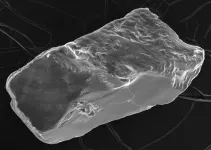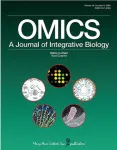(Press-News.org) COVID-19 cases in the U.S. have shown unexpected oscillating waves every six months between the southern states and the northern states and, to a lesser degree, from east to west, according to new research published today in Scientific Reports.
Public health scientists from the University of Pittsburgh, University of Ottawa and University of Washington conducted the first detailed analysis to demonstrate and characterize the six-month oscillation of cases across space and time. It provides key information that could inform public health activities, such as vaccination campaigns, that aim to control the virus.
“The COVID-19 winter waves are consistent with that of other respiratory viruses, but the existence of a repeated additional surge during the summer was unexpected,” said senior author Donald S. Burke, M.D., dean emeritus of Pitt’s School of Public Health. “These waves start near the southern U.S. border in July and August, when the weather is hottest and the humidity is high – factors that usually tamp down the spread of respiratory viruses. We don’t have a good explanation for why COVID-19 rates should increase in both the warmest and coolest times of the year.”
The research team, which includes lead author Hawre Jalal, M.D., Ph.D., of the University of Ottawa, and Kyueun Lee, Ph.D., of the University of Washington, believe the data suggest the six-month U.S. COVID-19 waves may be part of a larger pattern sweeping up and down the North American continent. Further data is needed to test the hypothesis and determine the exact mechanisms fueling these unexpected seasonal oscillations.
END
US COVID-19 rates oscillate every six months
2024-09-16
ELSE PRESS RELEASES FROM THIS DATE:
Lower neighborhood opportunity may increase risk for preterm birth
2024-09-16
FOR IMMEDIATE RELEASE
Monday, September 16, 2024
Contact:
Jillian McKoy, jpmckoy@bu.edu
Michael Saunders, msaunder@bu.edu
##
Lower Neighborhood Opportunity May Increase Risk for Preterm Birth
A new study suggests that neighborhoods with fewer educational, health, environmental, and socioeconomic resources may increase one’s risk for preterm birth and contribute to the racial gap in preterm birth in the Commonwealth.
Preterm birth, defined as a live birth before 37 weeks of pregnancy, is the second-leading cause of infant mortality in the United States, and one that disproportionately affects Black and ...
Analysis finds cardiac devices recalled for safety reasons infrequently subjected to premarket or postmarket testing
2024-09-16
Embargoed for release until 5:00 p.m. ET on Monday 16 September 2024
@Annalsofim
Below please find summaries of new articles that will be published in the next issue of Annals of Internal Medicine. The summaries are not intended to substitute for the full articles as a source of information. This information is under strict embargo and by taking it into possession, media representatives are committing to the terms of the embargo not only on their own behalf, but also on behalf of the organization they represent.
----------------------------
1. ...
Trailblazers in plasma turbulence computer simulations win 2024 James Clerk Maxwell Prize
2024-09-16
A pair of physicists with long ties to PPPL are being honored for their foundational work on turbulence in plasma. Understanding why instabilities occur and how to limit them is critical to perfecting fusion as a stable energy source for the electrical grid.
Greg Hammett, a PPPL theoretical and computational principal research physicist, and Bill Dorland, former associate laboratory director for computational sciences and current Lab adviser, have won the 2024 James Clerk Maxwell Prize for Plasma Physics. The American ...
Technology could boost renewable energy storage
2024-09-16
Renewable energy sources like wind and solar are critical to sustaining our planet, but they come with a big challenge: they don't always generate power when it's needed. To make the most of them, we need efficient and affordable ways to store the energy they produce, so we have power even when the wind isn't blowing or the sun isn't shining.
Columbia Engineering material scientists have been focused on developing new kinds of batteries to transform how we store renewable energy. In a new study published September 5 by Nature Communications, the team used K-Na/S batteries that combine inexpensive, readily-found elements -- ...
Introducing SandAI: A tool for scanning sand grains that opens windows into recent time and the deep past
2024-09-16
Stanford researchers have developed an artificial intelligence-based tool – dubbed SandAI – that can reveal the history of quartz sand grains going back hundreds of millions of years. With SandAI, researchers can tell with high accuracy if wind, rivers, waves, or glacial movements shaped and deposited motes of sand.
The tool gives researchers a unique window into the past for geological and archeological studies, especially for eras and environments where few other clues, such as fossils, are preserved ...
Critical crops’ alternative way to succeed in heat and drought
2024-09-16
Scientists have discovered that certain plants can survive stressful, dry conditions by controlling water loss through their leaves without relying on their usual mechanism - tiny pores known as ‘stomata’.
Nonstomatal control of transpiration in maize, sorghum, and proso millet – all C4 crops which are critical for global food security – gives these plants an advantage in maintaining a beneficial microclimate for photosynthesis within their leaves.
This allows the plants to absorb carbon dioxide ...
Students with multiple marginalized identities face barriers to sports participation
2024-09-16
MINNEAPOLIS/ST. PAUL (09/16/2024) — The U.S. Department of Health and Human Services Healthy People 2030 plan sets a national objective to increase youth sports participation from 50% to 63% over the next five years. For adolescents, staying active offers benefits to their overall health and their social and academic lives. However, the number of youths participating in physical activity and sports is on the decline. While participation gaps based on single social identities ...
Purdue deep-learning innovation secures semiconductors against counterfeit chips
2024-09-16
WEST LAFAYETTE, Ind. — Researchers in Purdue University’s College of Engineering have developed a patent-pending optical counterfeit detection method for chips used in semiconductor devices.
The Purdue method is called RAPTOR, or residual attention-based processing of tampered optical responses. It leverages deep learning to identify tampering. It improves upon traditional methods, which face challenges in scalability and discriminating between natural degradation and adversarial tampering.
Alexander Kildishev, professor in the Elmore ...
Will digital health meet precision medicine? A new systematic review says it is about time
2024-09-16
A new systematic review of pharmacogenomics clinical decision support systems used in clinical practice in the peer-reviewed OMICS: A Journal of Integrative Biology suggests that these e-health tools can help accelerate pharmacogenomics, precision/personalized medicine, and digital health emergence in everyday clinical practice worldwide. Click here to read the article now.
Anastasia Farmaki, MSc, from the Centre for Research and Technology Hellas, Thessaloniki, and coauthors in Greece, conducted a systematic review that examined and mapped the pharmacogenomics-clinical decision support ...
Improving eye tracking to assess brain disorders
2024-09-16
A University of Houston engineering team has developed wearable sensors to examine eye movement to assess brain disorders or damage to the brain. Many brain diseases and problems show up as eye symptoms, often before other symptoms appear.
You see, eyes are not merely a window into the soul, as poets would have it. These incredibly precious organs are also an extension of the brain and can provide early warning signs of brain-related disorders and information on what causes them. Examining the eyes can also help track the progression and symptoms of physical and mental shocks to the brain.
Researchers say ...



